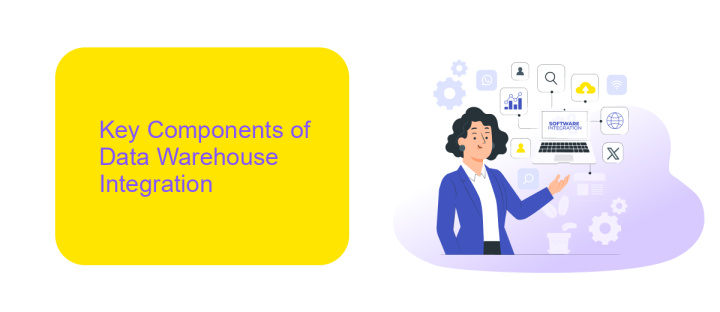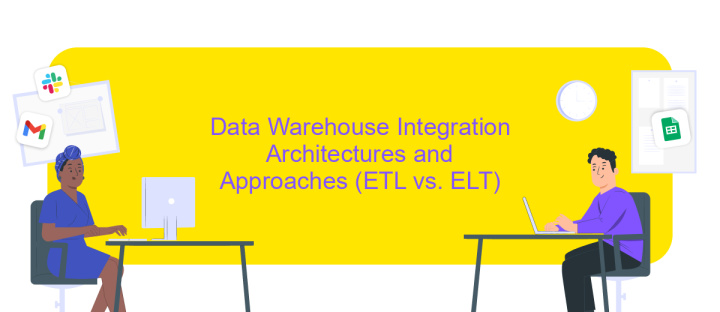Data Warehouse Integration Definition
Data warehouse integration refers to the process of combining data from various sources into a single, unified repository. This integration is crucial for organizations seeking to enhance data accessibility, consistency, and accuracy for informed decision-making. By streamlining disparate data sets, businesses can achieve a comprehensive view of their operations, enabling more effective analysis and reporting. This article explores the key concepts, benefits, and methodologies of data warehouse integration.
Understanding Data Warehouse Integration
Data warehouse integration is a critical process that ensures diverse data sources are brought together into a cohesive and unified repository. This integration is essential for organizations aiming to leverage data-driven insights for strategic decision-making. By consolidating data from various systems, businesses can enhance data consistency, improve data quality, and facilitate comprehensive analysis.
- Data Extraction: Gathering data from multiple sources, including databases, applications, and external files.
- Data Transformation: Converting extracted data into a consistent format suitable for analysis.
- Data Loading: Inserting the transformed data into the data warehouse, ensuring it's ready for querying and reporting.
- Data Cleansing: Identifying and correcting errors or inconsistencies in the data to maintain accuracy.
- Data Synchronization: Ensuring that the data warehouse is updated with the latest information from source systems.
Integrating a data warehouse effectively requires careful planning and execution. Organizations must choose appropriate tools and technologies that align with their specific data needs. Additionally, establishing robust data governance and management practices is crucial to maintaining data integrity and security. By understanding and implementing these integration processes, businesses can unlock the full potential of their data assets.
Key Components of Data Warehouse Integration

Data warehouse integration is a critical process that involves combining data from various sources into a centralized repository. One of the key components of this integration is data extraction, which involves retrieving data from different systems, databases, and applications. This step is crucial for ensuring that the data is accurate and up-to-date. Following extraction, data transformation is essential to convert the data into a consistent format suitable for analysis. This process often includes cleaning, filtering, and aggregating the data to meet the specific requirements of the organization.
Another vital component is data loading, where transformed data is loaded into the data warehouse. Efficient data loading ensures that the data warehouse is updated regularly, providing timely insights for decision-making. Additionally, integration tools like ApiX-Drive can streamline these processes by automating data transfers and transformations, reducing manual effort and errors. ApiX-Drive offers a user-friendly interface that allows seamless integration of various data sources, making it easier for businesses to manage their data flows effectively. These components work together to ensure that the data warehouse serves as a reliable source of business intelligence.
Data Warehouse Integration Architectures and Approaches (ETL vs. ELT)

Data warehouse integration is crucial for consolidating data from various sources into a unified repository, enabling comprehensive analysis and reporting. Two primary approaches to data integration are ETL (Extract, Transform, Load) and ELT (Extract, Load, Transform). These methodologies differ in how and where the transformation processes occur, influencing performance and flexibility.
- ETL (Extract, Transform, Load): In ETL, data is extracted from source systems, transformed into a suitable format, and then loaded into the data warehouse. This approach is beneficial when dealing with complex transformations and data quality checks before loading.
- ELT (Extract, Load, Transform): ELT reverses the last two steps, loading raw data directly into the data warehouse before transformation. This method leverages the power of modern data warehouses to perform transformations, often resulting in faster processing for large datasets.
Choosing between ETL and ELT depends on various factors, including data volume, transformation complexity, and existing infrastructure. ETL is often favored for its robust data quality control, while ELT is preferred for its efficiency and scalability in handling big data. Ultimately, the decision should align with organizational needs and technological capabilities.
Benefits and Challenges of Data Warehouse Integration

Data warehouse integration is a crucial process in modern enterprises, facilitating the seamless consolidation of data from various sources into a unified repository. This integration enhances data accessibility and supports informed decision-making by providing a comprehensive view of organizational data. By integrating disparate data sources, businesses can ensure consistency and accuracy, ultimately leading to improved operational efficiency.
However, data warehouse integration comes with its own set of challenges. The complexity of integrating diverse data formats and structures can pose significant technical hurdles. Additionally, ensuring data quality and consistency across different systems is a critical concern. Organizations must also address security and privacy issues, especially when dealing with sensitive information.
- Improved data consistency and accuracy
- Enhanced decision-making capabilities
- Increased operational efficiency
- Challenges in handling diverse data formats
- Ensuring data quality and security
In conclusion, while data warehouse integration offers substantial benefits in terms of data management and utilization, it requires careful planning and execution to overcome the associated challenges. Organizations must invest in robust integration strategies and technologies to fully realize the potential of their data warehouses.
Best Practices and Future Trends in Data Warehouse Integration
Implementing best practices in data warehouse integration involves ensuring data quality, consistency, and accessibility. Organizations should prioritize the use of standardized data formats and robust ETL (Extract, Transform, Load) processes to streamline data flow. Regular audits and monitoring are crucial to maintain data integrity and security. Leveraging cloud-based solutions can enhance scalability and flexibility, allowing businesses to adapt to growing data volumes efficiently. Tools like ApiX-Drive can facilitate seamless integration by automating data transfers between various systems, reducing manual intervention and minimizing errors.
Looking towards future trends, data warehouse integration is expected to evolve with advancements in artificial intelligence and machine learning. These technologies will enable more sophisticated data analysis and predictive insights, driving better business decisions. Additionally, the rise of real-time data processing and the adoption of hybrid cloud environments will further transform integration strategies. Businesses will increasingly focus on harnessing big data and IoT (Internet of Things) to gain competitive advantages, necessitating more agile and comprehensive integration approaches.
FAQ
What is Data Warehouse Integration?
Why is Data Warehouse Integration important?
What are the challenges of Data Warehouse Integration?
How can organizations automate Data Warehouse Integration?
What role does ApiX-Drive play in Data Warehouse Integration?
Strive to take your business to the next level, achieve your goals faster and more efficiently? Apix-Drive is your reliable assistant for these tasks. An online service and application connector will help you automate key business processes and get rid of the routine. You and your employees will free up time for important core tasks. Try Apix-Drive features for free to see the effectiveness of the online connector for yourself.

